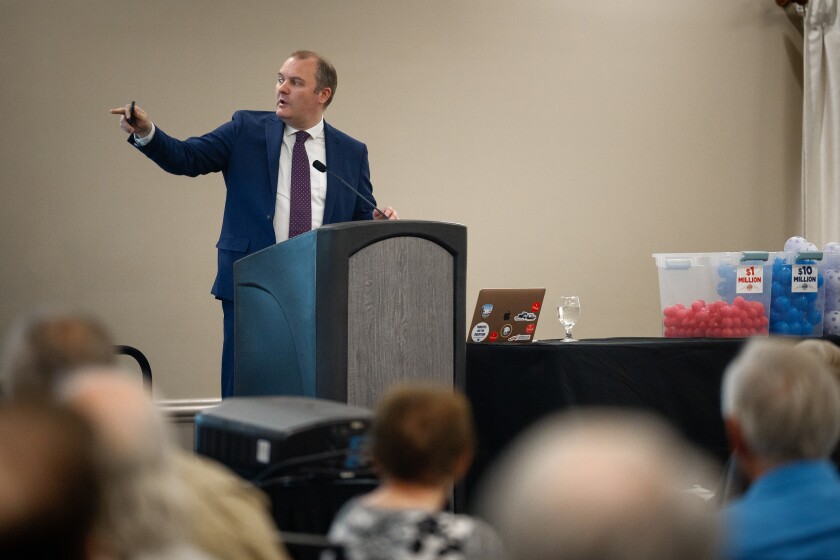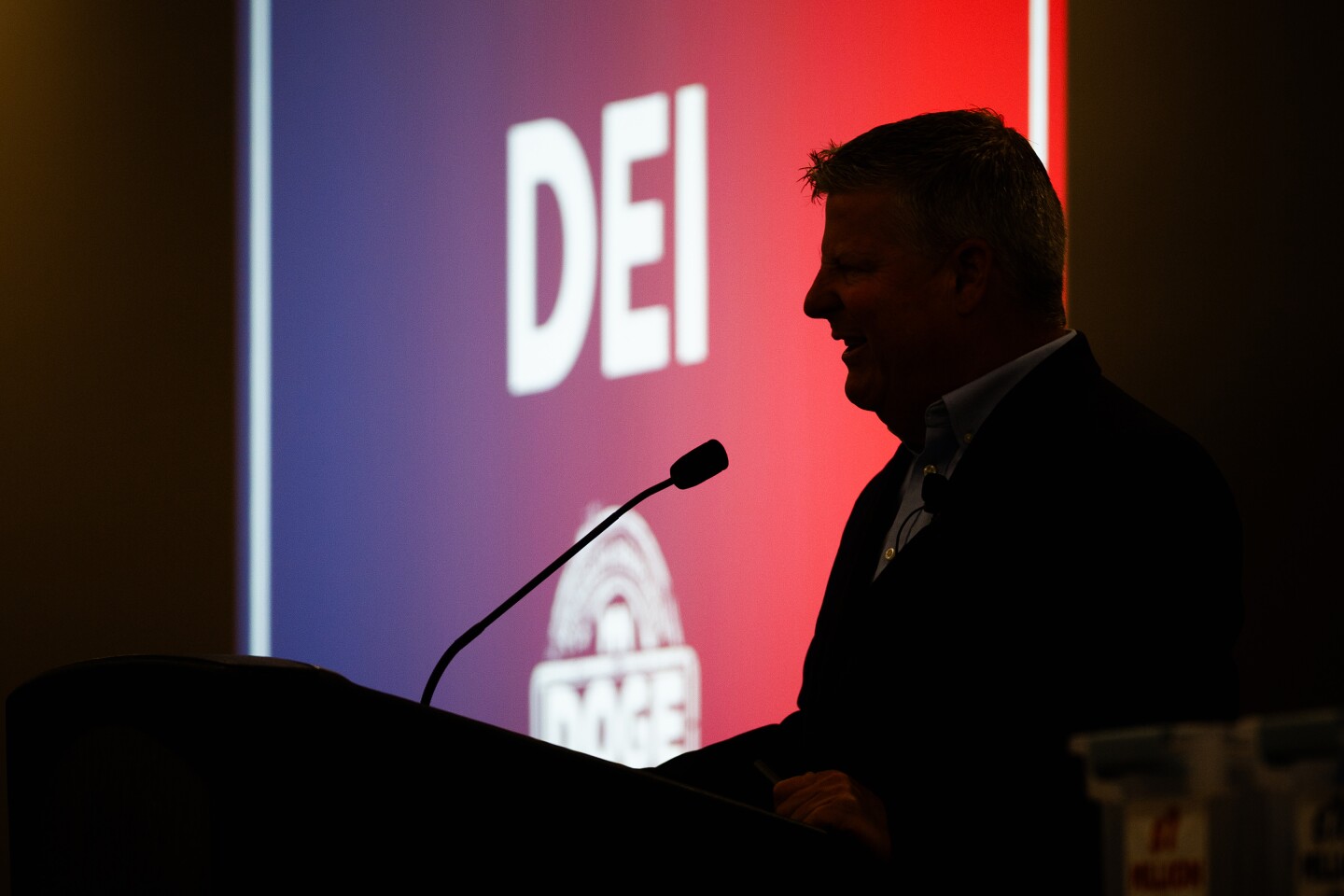ROCHESTER — What if Minnesota had its own Elon Musk-style Department of Government Efficiency and a proponent of taking a chainsaw to the state’s ever-growing state budget?
What would happen?
It’s a sexier framing than, say, a dry 101 seminar on the state budget and likely accounted for the sizable crowd that attended the presentation sponsored by the conservative Center of the American Experiment at the Rochester International Event Center on Wednesday.
Granted, DOGE hasn’t been all it was cracked up to be. Musk at first promised to find $2 trillion in savings after a thorough ransacking of the federal budget. His efforts fell far short of that target, to around $160 billion, and some analysis put the estimate at less than that.
Still, state government can be far leaner and meaner than it is today while not compromising core government functions, said Bill Walsh, marketing & communications director for the Center.
“Where there’s a will, there’s a way,” Walsh told the gathering. “We’re going to show you the way. When they say, well, ‘we want to cut government spending. We want to slow the growth in government spending.’ How do we do that?”
Walsh argued that today’s state budget is a target-rich environment.
From eliminating scores of DEI staff positions at state agencies to stiffening oversight and accountability over nonprofits that receive state funding to removing an inflation factor from the K-12 funding formula to relaxing regulations on state-funded construction projects, a plentitude of opportunities to pare the state budget exist, he argues.
But to achieve substantial savings, you have to go after the Big Kahunas of state government: Health and human services and education.
To make the information digestible, Center officials used plastic balls of various hues to illustrate the task: White balls were worth $100 million, the blue $10 million and red $1 million. As they itemized their hypothetical cuts, balls were transferred to a clear box. As the mound of balls rose, they reached a blue line on the box to indicate structural balance had been achieved.
Walsh pointed out the state budget is currently balanced as required by the constitution, but is structurally imbalanced, meaning that the state is taking in $2 billion in revenue less than it is spending.
John Phelan, a Center economist, said one of the biggest downsides to a large state budget is the sagging effect it has on the economy. He argued that the GDP per capita in Minnesota for decades exceeded that of the nation at large. He called it the state’s “GDP premium” and a sign of the state’s relative economic vigor.

Joe Ahlquist / Post Bulletin
But that premium has been slowly going down to a point that it has now vanished. GDP per capita, a standard of economic welfare, is the value of all the goods and services produced in an economy divided by the number of people in that economy.
Phelan said that as far back as 1997, the state’s GDP per capita was $2,000 above that of the U.S. generally. It peaked to nearly $5,000 in the mid-90s. But since 2014, that number has steadily slid as GDP growth per capita has trailed the U.S. average. In 2024, for the first time, Minnesota is now a “below average per capita state,” Phelan said.
“What caused this? If you’re looking at this, you have to think it’s got to be something that happened around 2014,” Phalen said. “What happened in 2014? The Dayton administration enacted a new fourth tier of income tax to 9.85%”
Phalen said the main task at hand was how to deal with a state budget that began to explode in 2023, when the DFL, in control of the governor’s office and the state house, pushed spending levels to unprecedented heights.
To control spending, Phelan said, it is necessary to deal with the two biggest drivers of the state budget. Health and human services and education now make up 70% of state government spending compared to 53% in 1990.
“HHS particularly is devouring the state budget and driving spending growth,” he said.
Phelan proposed a number of places where state spending could be pared to slow government growth. Removing inflation from K-12 funding would save nearly half a billion dollars.

Joe Ahlquist / Post Bulletin
“We believe that if you’re going to increase state government spending, vote on it. Put yourself on record as saying, ‘Yeah, we think we should spend more money,’” he said.
The Minnesota Youth Council? Cut it. Save $750,000. Ethnic studies grants? Eliminate it. Save $1.7 million. So on down the line. Teachers of Color grant program? $86.8 million. The Perpich Center for the Arts? $17.4 million.
But no meaningful progress in reducing the state budget can be achieved without tackling human services.
“This is the big one. If you are budget-cutting Ahab, this is your White Whale,” Phalen said. “We’re not looking to smash the line down, but just depress the rate of growth.”
He said there was a lot of scope for cuts. He noted, for example, that Medicaid spending per enrollee in Minnesota is the second highest in the U.S., only behind North Dakota. Minnesota is No. 1 in Medicaid spending per enrollee for people with disabilities. Removing the public union pay system for primary care assistants should also be a priority. Slow down the growth rates for home-based disability care.
“We’re talking about slowing down the growth rate,” Phelan said. “Not reducing the amount necessarily from where we are or from over a couple of years ago, but getting that dotted line down, bending that line down.”

Joe Ahlquist / Post Bulletin

Joe Ahlquist / Post Bulletin

Joe Ahlquist / Post Bulletin
